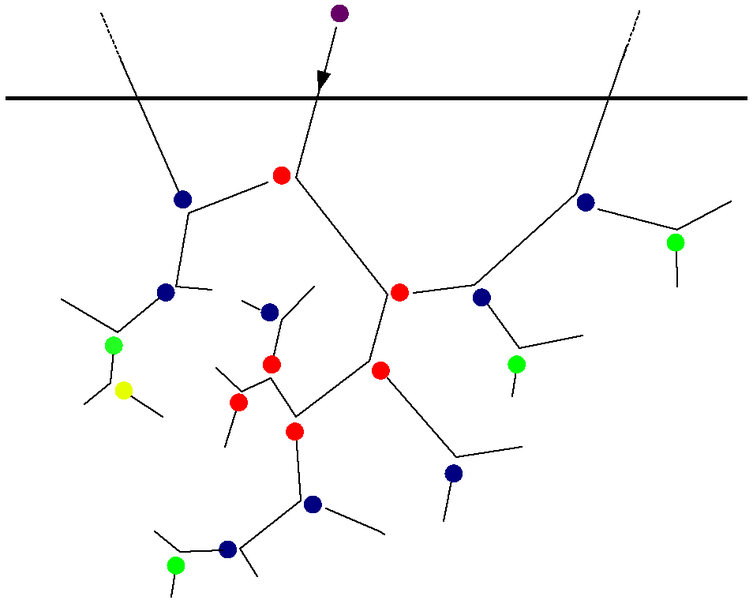I have briefly mentioned to problem of embrittlement in nuclear reactors in other posts. A recent news items about problems at a U.S. nuclear reactor brought my attention to the problem and I decided that it was time for me to write a whole post about it.
Neutron bombardment has a deleterious effect on materials. When a high energy neutron strikes an atom in a metal such as the steel used in nuclear reactors, it can initiate a cascade of collisions that spread out from the original collision site. These cascades can result in point defects and dislocations in the lattice of the metal microstructure. If the neutron flux density is high and/or the flux continues for a long time, the metal can become brittle and loose the strength and cohesion necessary to maintain the integrity of a structure such as a nuclear reactor.
The high pressures and temperatures in nuclear reactor containment vessels as well as the stresses caused by a major accident or earthquake could cause the vessel to rupture if the metal had become brittle through neutron bombardment. Improvements in steel manufacture that have resulted in tougher steels with lower trace impurities and reactor designs changes that reduced neutron exposure have reduced the embrittlement problem in newer reactors but it continues to be a problem in older reactors and is still an issue, especially with the extension of operating licenses for older reactors. Recent advances in material science have resulted in better understanding of the embrittlement process and an improved ability to predict the course of the embrittlement process. Estimations of the functional lifespan of particular reactors have greatly improved.
I covered the Palisades nuclear power plant on the shores of Lake Michigan in a previous post. The plant went into operation in 1971 and was licensed for forty years until 2011. In 2007, the license was extended for another twenty years until 2031. Recently, the NRC has determined that the Palisades reactor may be reaching the end of its lifespan because the metal in the reactor vessel has become too brittle. They are saying that unless the operators can provide sufficient proof that the reactor can continue to operate safely, it may have to be shut down by 2017. It is a very old reactor that is considered one of the least safe in the United States. It has had many problems with leaks which could increase as embrittlement proceeds.
The question has to be raised of whether the NRC took a hard enough look at the condition of the reactor before issuing a new license in 2007. It appears that the original estimate of a safe lifespan of forty years was accurate and that the new license should never have been issued.
Collision cascade diagram:
“Schematic illustration of a linear collision cascade. The thick line illustrates the position of the surface, and the thinner lines the ballistic movement paths of the atoms from beginning until they stop in the material. The purple circle is the incoming ion. Red, blue, green and yellow circles illustrate primary, secondary, tertiary and quaternary recoils, respectively. In between the ballistic collisions the ions move in a straight path.” Wikipedia.

